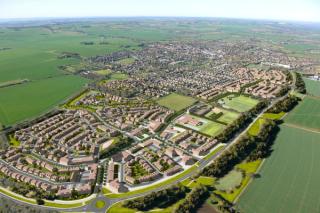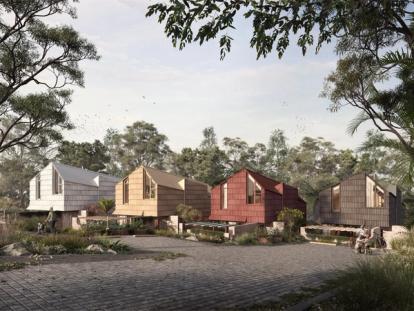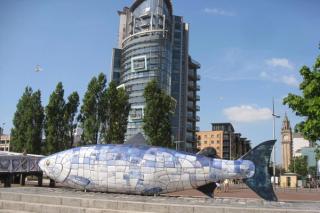
Tūī Glen Sustainable Housing Development
- Client Name
- Good Good Housing
- Location
- Auckland, New Zealand

Challenge
Located a stone's throw away from Auckland's CBD in Birkenhead, this housing development, is being labelled as one of the most sustainable in Aotearoa, New Zealand. However, in order to achieve the desired sustainable outcomes, particularly the enhancement and protection of the significant native forest located on the site, a complex consenting process was required. More specifically, the site required medium-density housing to proceed, yet under the Auckland Unitary Plan, the location sits within a low-intensity zone for residential development.
Solution
Our Planning team worked closely with the Council through the consent process to ensure key matters of concern were appropriately addressed. A pre-application meeting was undertaken with the Council to discuss the project and obtain ‘buy-in’ to the approach to be implemented to achieve more intensive development.
A comprehensive assessment of the surrounding residential neighbourhood was completed to understand the amenity and character of this environment and the extent to which a more intensive development could be in keeping with the surrounding area. This was supported by an assessment of the indigenous biodiversity values of the vegetation located within the significant ecological area on the site and how these values could be enhanced and protected through the development process.
The resource consent application was supported by a comprehensive assessment of effects on the environment prepared by our team. This demonstrated how the proposed housing development was in keeping with the character and amenity values of the surrounding established residential neighbourhood and, despite not being low-intensity, provided for a better, more harmonious way of life.
We worked closely with ahha Architects to ensure the final design was consistent with the overriding outcomes desired by the Auckland Unitary Plan and delivered the level of enhancement and protection of indigenous biodiversity values desired. This included the positioning and layout of the proposed dwellings to maximise internal amenity and access to natural sunlight. The design also achieved connected outdoor living areas and comprehensive landscape planting around the proposed dwellings to integrate the development with the built and natural surroundings. As mentioned, a key design element was the enhancement and protection of the native forest area to ensure the development was contained in a spacious vegetated setting. The design outcome was a medium-density development that provided for regenerative homes that follow the landform, orientated towards both the sun and the native bush, and shared parking and maneuvering spaces. Curating a sense of micro-community was incorporated into the design with a rewilded landscape, where the boundaries are blurred, and courtyards and gardens are either public, semi-private, or private in and around the homes.
Impact
The consenting strategy implemented for the project was critical to achieving resource consent on a non-notified basis with conditions that were also acceptable to the client.
What was ultimately achieved was a beautiful development consisting of four new regenerative homes with a specific focus on living harmoniously with the land, being self-sufficient through energy generation and water conservation, and a sustainable micro community through the use of shared spaces. Tūī Glen looks to stand the test of time not only in design but should continue to have a net-positive impact on its surrounding environment long after it has been developed.
Visit the Good Good Housing website for more information.
“A special mention to SLR for putting together a very robust AEE. Consenting four houses on a complex site plus densifying in a way that works to regenerate the site's ecology was no mean feat."
Jimmi O’Toole, Founder, Good Good Housing


